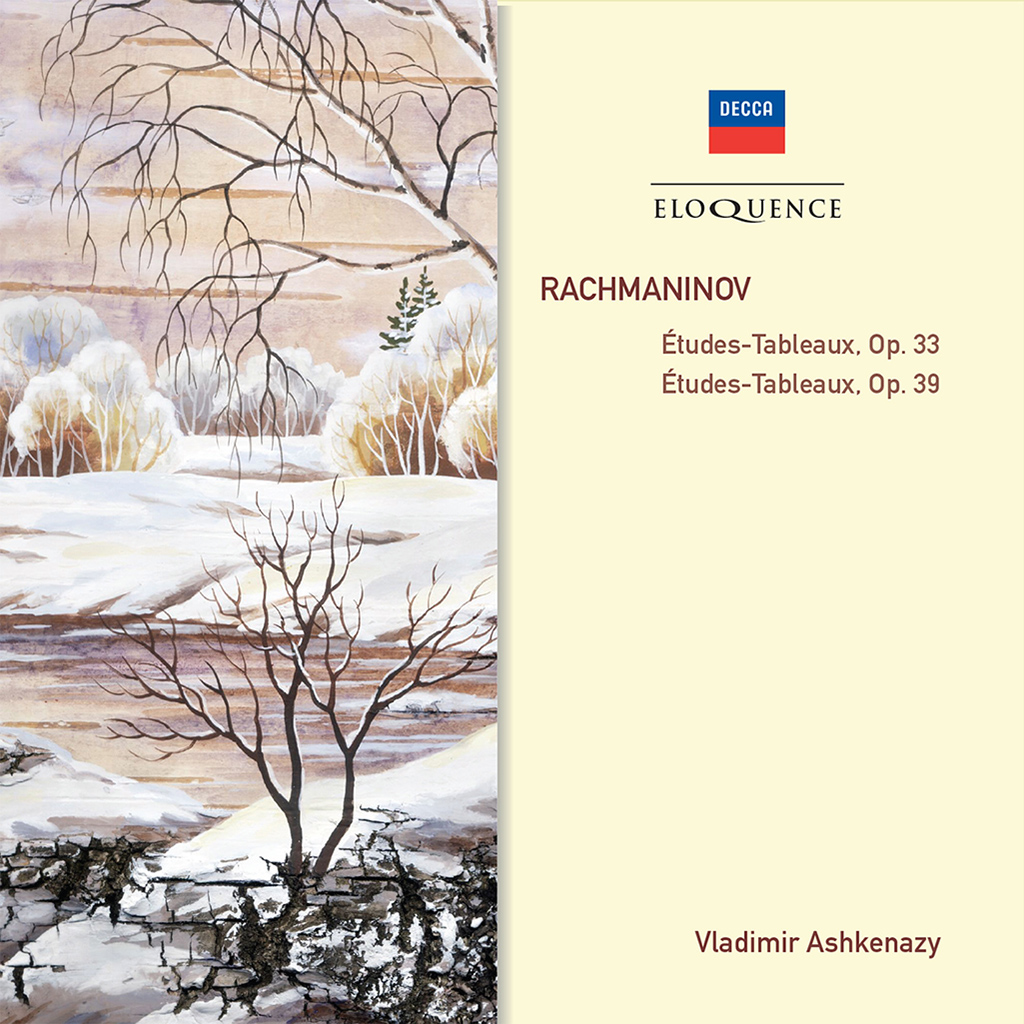The seventeen ‘Études-tableaux’ date from the last decade of Rachmaninov’s life in Russia. By this time he had completed Preludes in each of the major and minor keys and was ready to move in a slightly different direction. By qualifying the term with the word ‘tableau’, Rachmaninov seemed to be suggesting the introduction of a visual or even programmatic element into these complex ‘studies’.
Vladimir Ashkenazy recorded the Op. 33 set of ‘Études-tableaux’ four years apart, taping Nos. 2, 3, 5 and 6 in September 1977 and Nos. 1, 4, 7 and 8 in April 1981. He recorded the Op. 39 set twice – first in February 1973 and then in June 1985/September 1986. The 1985-86 recordings were released internationally on CD but this is the first international release of the earlier 1973 recordings.
SERGEI RACHMANINOV
Études-tableaux, Op. 33
Études-tableaux, Op. 39 *
Vladimir Ashkenazy, piano
* FIRST INTERNATIONAL RELEASE ON CD OF THE 1973 RECORDINGS
Recording Producers: James Walker (Op. 33); Ray Minshull (Op. 39)
Balance Engineers: John Dunkerley (Op. 33); Tryggvi Tryggvason (Op. 39)
Recording Locations: Kingsway Hall, London, UK, February 1973 (Op. 39); All Saints Church, Petersham, London, UK, September 1977 (Op. 33 Nos. 2, 3, 5, 6); Church of St. George the Martyr, Holborn, April 1981 (Op. 33 Nos. 1, 4, 7, 8)
‘it is doubtful if this centenary year will produce a better recital of Rachmaninov’s solo works, or one that more usefully fills gaps in the catalogue … [Ashkenazy] is exactly the sort of pianist for whom Rachmaninov composed and, though his virtuosity can be taken for granted, the sustained eloquence of his playing throughout is remarkable, as is the feeling of complete naturalness he maintains in the technically most demanding and musically most intense passages. Add to this a lifelike recording […] and you have […] an issue which recommends itself’ [Op. 39] Gramophone
‘everything is made to sound natural, inevitable. Hear Ashkenazy’s colouring of the sombre first page of Op. 33 No. 3, his clear differentiation between the contained agitation of No. 2 and the tireless motion of No. 5, or his shaping of the exquisite melody buried in the traceries of No. 7, the loveliest of the set. This is the finest performance of these pieces that I have heard’ [Op. 33] Gramophone

